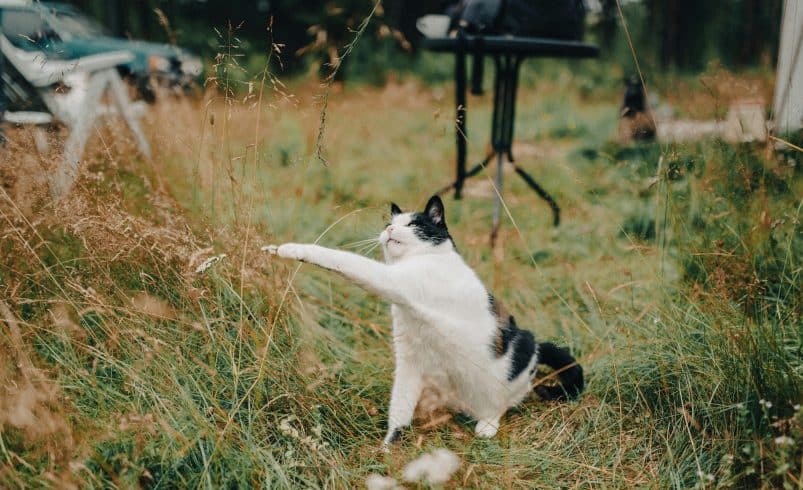Best GPS Trackers for Adventurous Cats in 2025: Keep Your Feline Explorer Safe
- May 7, 2025
- 0
Did you know that outdoor cats can roam up to 5 miles from home in a single day? I’ve seen firsthand how this wanderlust can keep pet parents

Did you know that outdoor cats can roam up to 5 miles from home in a single day? I’ve seen firsthand how this wanderlust can keep pet parents awake at night. Modern GPS trackers have revolutionized how we monitor our feline friends, offering peace of mind while respecting their natural exploring instincts.
GPS tracking technology for cats has evolved significantly, incorporating multiple positioning systems and sensors to ensure reliable pet monitoring. Modern cat trackers combine GPS satellites, cellular networks, and sometimes Wi-Fi positioning for enhanced accuracy. The primary components include a GPS receiver, cellular modem, microprocessor, and power management system.
GPS tracking offers the highest accuracy for outdoor locations, typically within 5-10 meters. Bluetooth tracking, while limited in range to approximately 100 feet, provides excellent indoor coverage and consumes less power. Radio Frequency (RF) tracking serves as a backup when GPS signals are unavailable, though its accuracy varies significantly based on environmental conditions.
Battery technology remains crucial for consistent tracking performance. Most current models utilize lithium-ion batteries, balancing size and capacity. Advanced power management systems extend battery life through adaptive polling rates and sleep modes. Typical battery duration ranges from 2-7 days, depending on usage patterns and tracking frequency.
Durability features protect these sophisticated components from environmental challenges. Modern trackers incorporate IPX7 or IPX8 water resistance ratings, ensuring functionality during rain or brief water exposure. Impact-resistant casings shield internal components from drops and scratches, while sealed designs prevent dust infiltration.
Real-time location updates form the cornerstone of effective cat tracking. Advanced models refresh positions every 2-5 minutes during active monitoring, with customizable intervals to balance accuracy and battery life. Some trackers incorporate predictive algorithms to anticipate movement patterns.
Geofencing capabilities enable owners to establish safe zones around their homes. When cats cross these virtual boundaries, the system generates immediate notifications. Multiple zone configurations accommodate different schedules and locations, with customizable alert settings for various scenarios.
Activity monitoring provides insights into feline behavior patterns. Accelerometers measure movement intensity, rest periods, and activity levels throughout the day. This data helps identify potential health issues or unusual behavior changes early.
Modern safety features include SOS buttons for rapid location sharing and emergency alerts for unusual movement patterns. Light and sound indicators aid nighttime location, while temperature sensors warn of potentially dangerous conditions.
Weight and size significantly impact wearing comfort. Optimal trackers weigh under 30 grams and measure less than 2 inches in any dimension. Ergonomic designs distribute weight evenly across the collar, preventing irritation during extended wear.
The Whisker Guardian Pro leads the market with exceptional battery life, averaging 8 days between charges. Its compact design weighs just 25 grams while incorporating comprehensive tracking capabilities. Location accuracy typically falls within 2 meters outdoors.
PawTracker Elite combines affordable pricing with robust features. At $129 with reasonable subscription fees, it offers excellent value. The device maintains 4-day battery life under normal use and provides accurate tracking within 5 meters.
FeliFinder Advanced emphasizes durability with military-grade construction. Though slightly heavier at 28 grams, it boasts the strongest water resistance ratings. Battery performance reaches 6 days, with rapid charging capabilities.
Consumer feedback highlights reliability as the primary consideration. The Whisker Guardian Pro maintains a 4.8/5 rating across major platforms, with users particularly praising its accuracy and battery life. PawTracker Elite follows at 4.6/5, while FeliFinder Advanced scores 4.5/5.
Initial configuration requires careful attention to device settings. Begin by charging the tracker fully and downloading the companion application. Most modern trackers utilize Bluetooth for initial pairing, streamlining the setup process.
Proper collar attachment significantly impacts tracking reliability. Position the device on the collar’s top side, opposite the clasp. Ensure sufficient room for comfort while preventing the tracker from rotating beneath the neck.
App setup involves creating an account, entering pet details, and configuring alert preferences. Enable all relevant permissions for background operation and notifications. Most platforms offer guided tutorials for optimal configuration.
Testing should occur in various environments before relying on the system. Verify tracking accuracy both indoors and outdoors, and confirm alert functionality by intentionally crossing geofence boundaries. Document response times and coverage gaps for future reference.
Strategic battery management extends operational life significantly. Configure location refresh rates based on activity levels and risk factors. Reduce polling frequency when cats remain within safe zones, increasing updates during active periods.
Regular maintenance ensures consistent performance. Clean contact points monthly, check for wear signs, and update firmware when available. Replace collar attachments showing stress marks or degradation.
Coverage optimization involves identifying and addressing dead zones. Map signal strength throughout common areas, noting potential interference sources. Consider adding Wi-Fi waypoints in problematic locations for improved indoor tracking.
Address common issues proactively. Signal interference typically results from dense materials or electronic equipment. Repositioning the tracker slightly higher on the collar often improves reception. Battery drain issues usually stem from aggressive polling settings or poor cellular coverage forcing constant reconnection attempts.
Your cat’s safety doesn’t have to come at the expense of their independence. By choosing the right GPS tracker and implementing proper safety measures, you can give your feline friend the freedom to explore while maintaining your peace of mind. Remember, the best tracker is one that suits both your cat’s lifestyle and your monitoring needs.